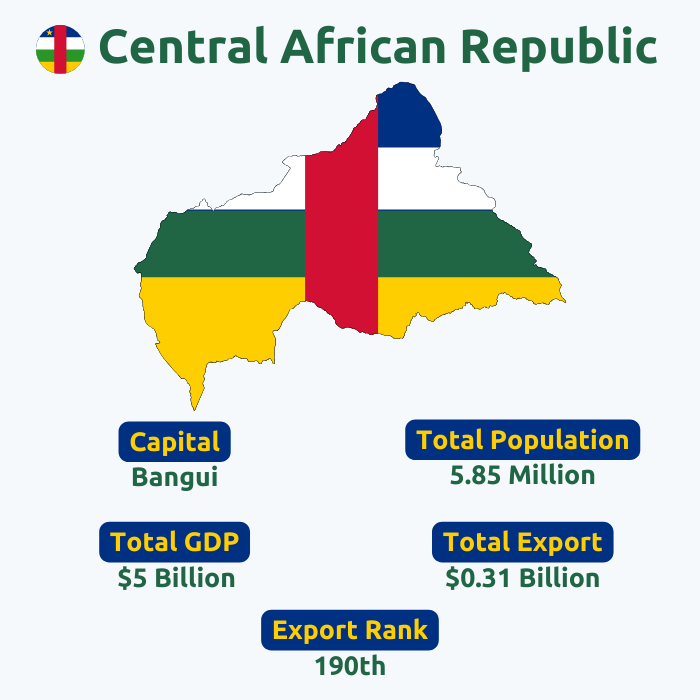Sample Data
Understanding Central Africa Export Data
We obtain trustworthy data from organizations, shipping businesses, and customs ports. This Trade Data
contains a wide range of fields, such as HS codes, product descriptions, prices, quantities, origin country,
destination country, and port names together with currency values. For traders and marketers, this trade data is
crucial information that helps them to make informed decisions. From the HS codes and product descriptions to
the quantity and cost of each product, everything can be obtained through this trade data.
We have included a sample of this trade data for your convenience and greater understanding so
that you can see what the trade data looks like as a whole, with complete details.
Central Africa’s export data provides comprehensive information on goods and services that are being exported to other countries. It includes details such as the type of product, its quantity, value, origin country, and destination. By analyzing this data, businesses gain insights into market trends, competitor activities, and potential business opportunities. According to Central Africa's trade data, Central Africa exported goods worth $136.7 million in 2023. The information we give you on export and trade data from Central Africa is highly helpful and educational. All of the information in our database is derived from recently updated shipping bills, invoices, and other crucial transaction documents. We obtain trustworthy data from organizations, other shipping firms, and customs ports in Central Africa. Trade data from Central Africa includes several categories, such as HS codes, product descriptions, quantities and prices, port names, and currency values.
So, as you can see, we obtain trustworthy data from organizations, shipping businesses, and customs ports. The trade data contains a wide range of fields, such as HS codes, product descriptions, prices, quantities, origin country, importers/exporters names and addresses, destination country, and port names together with currency values. For traders and marketers, this trade data is crucial information that helps them make informed decisions. From the HS codes and product descriptions to the quantity and cost of each product, everything can be obtained through this trade data. We have included a sample of the trade data for your convenience and greater understanding so that you can see what the trade data looks like as a whole, with complete details.




